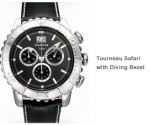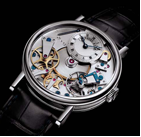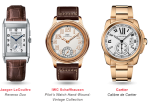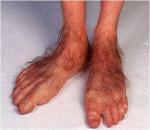When you buy through links on our site, we may earn an affiliate commission.
-
Posts
6,449 -
Joined
-
Last visited
-
Days Won
33
Everything posted by PeteM
-
You out beating up crocodiles again mate !?!
-
-
Mate just because he may say it...it certainly dont mean its right.. Too many make that assumption....
-
That has really knocked me back mate... I am astounded by that and even more so by the comments made in an attempt to mitigate this issue.
-

A Beginners Guide to Watch Anatomy (Now with TRL update)
PeteM replied to PeteM's topic in General Discussion
Can any explain to me why '[censored]' is censored when I type it in a post ?????? ............( Word is .... F L A N G E) I cannot think why as an English word .... Or is it a slang?? Like.... [censored] Off... or you Mother flanger...or you Flanger..... Post Note .... See I cant [censored] off but I can be a Mother Flanger and a Flanger !! -
I found this introductory information on a website and thought it maybe of use to guyys here as a way of getting a feel for watches and terms etc. i am sure its been done before but in case in proves of any use to anyone here I thought it worth while to use the info and play about to get it in a readable formay here rather than just attaching a link HOROLOGICAL TERMS Case: Consisting of a watch's middle, bezel, and back, it protects and houses the movement inside. It can be made from different metals and in different shapes. The examples below illustrate common case shapes currently being produced. Crystal: The Crystal is a 'glass' covering the dial or 'face' of the watch, protecting it from dirt and water. There are three major types of crystals produced and used in watch making. Synthetic Sapphire: This transparent, lab grown element has exactly the same chemical composition as natural sapphire. Sapphire ranks a 9 on Mohs' hardness scale. It is the most expensive type of crystal and the majority of watches imported from Switzerland contain them. Mineral: Mineral crystals are made of glass. Mineral crystals are a 7 on the Mohs scale of hardness. They are inexpensive compared to sapphire crystals, usually costing less than one hundred dollars to replace if damaged. Acrylic: Acrylic is the most affordable type of crystal. It can be easily polished to remove light scuffs. Mohs Scale of Hardness: A scientific scale which measures the relative hardness of minerals. The scale ranges from 1 to 10, with 10 being the hardest; the higher the rank, the more scratch resistant the material. Dial: The dial is the face of the watch. There are many ways a dial can be marked. The examples below show some of the most popular dials. Subdial: A small dial set within the main dial, used to display an additional complication such as Chronograph readout, seconds, or date. Hour Marker: An hour indicator applied or painted on the dial of the watch. Hands: The hands on a watch indicate either the hour, minute, or second, along with other functions. Often taking their cues from the general aesthetic of the watch, the hands can vary in shape, size and style. "Blued Steel" hands are dark navy in color; a result of super heating steel until the color changes. This was first used by the famous watchmaker Abraham-Louis Breguet in the 19th century to help make the hands more legible. Rehaut: The [censored] or projection around the inner edge of the watch that typically holds the watch crystal up and reinforces it. The rehaut is typically referred to mostly on Rolex watches as they are inscribed for anti-counterfeiting measures. On most Breitling watches the rehaut is covered by an applied chapter ring. Crown: Connects to the internal movement of a watch through the case, the crown, which can vary from a simple gasket to an intricate system of screws, allows you to wind, hand-set, and employ special functions like date settings and time. Screw-down Crown: A crown which aids water resistance by sealing it against the case. The seal is achieved through gaskets and by matching the threaded pipe on the case with the crown's internal threads, while twisting the crown to lock it into place Pusher: Otherwise dubbed a 'push-piece' or a 'push-button', this handy mechanical element is mounted on a watch's case to control specific functions, such as timing functions in a chronograph. Bezel: The bezel is either snapped or screwed into the case and often holds the crystal, the protective covering of the watch, in place. Bezels can be functional for diving and timing or purely aesthetic, as with a diamond set bezel. Diving Bezel: Enables a diver to visually track his/her dive time using minute markers from 0 to 60 on a unidirectional rotating bezel. For safety reasons, unidirectional bezels only rotate in the counter-clockwise direction. If the bezel could move clockwise and was accidentally turned, the diver could think he/she had a greater air supply and may not surface in time. Timing Bezel: Similar to a Diving bezel but can move clockwise and counter clockwise. This type of bezel might be used for cooking, timing parking meters, etc. Strap: Whatever your favorite look-leather, alligator, canvas, or other-the strap is attached to the case and bound by a buckle, keeping your watch on tight. Bracelet: Usually made of metal or in combination with another material such as rubber, as with link watch bands, the bracelet keeps your timepiece securely attached and looking sharp. When there is no discontinuity between the bracelet and the case, this is called an 'integral' bracelet. Ardillon Buckle (Tang Buckle): A traditional buckle in which one end of the strap is slipped through a buckle with a pin used to secure the fit of your watch. Deployant Buckle: A deployant, or fold-over clasp, is an elegant flourish that allows for perfect strap closures through interlocking metal pieces, eliminating the need for strap holes. It is considered safer to wear than a regular Ardillon buckle. If the buckle should happen to open up, the watch is still attached to the wrist. Movement: The movement is the engine of the watch; it makes the watch work. The different types of movements and the importance of their functionality are explained in greater detail in the movements section below. Rotor: In automatically winding timepieces, the rotor's partial or complete revolutions work in conjunction with the movements of the human arm. The rotor turns freely in both directions to wind the mainspring, which stores and transmits the energy that powers your watch. Lug: A case attachment, the lug allows for a strap or bracelet to be attached to the watch case. Ensures that your ticker isn't going anywhere you don't want it to. Exhibition Case Back: A case back to show off movement finishing and craftsmanship. Ideal for anyone who appreciates the intricate inner-workings of a timepiece, an exhibition back displays the mechanical workings of a watch. Skeleton Movement: This watch does not contain a dial. It exposes the movement, etched and engraved to a high degree of craftsmanship, from the face of the watch. Chronometer: A watch with a particularly high level of precision. According to Swiss law, a watch may not be dubbed a chronometer until it has passed a series of grueling tests and measurements and been certified. Mechanical Watch Movements 'Manual movements' are the most traditional movements, usually found in very conservative, collectable, and luxury watches. It is the oldest type of watch movement in production, dating back to the sixteenth century. Sometimes referred to as a 'hand-wound movement', the manual watch needs to be wound in order to function. Depending on the power reserve, this could be daily, every two days, once a week, etc. Many people cherish the timeless tradition of manual movements and even enjoy the ritual of winding them. Components of the Manual Movement Watch: Crown: Wheel on the side of the watch used to set the time. On a mechanical movement, either manual or automatic, the Crown is usually turned to wind the watch. Mainspring: Power source of the movement. The kinetic energy from winding the Crown is transferred to the coil-shaped Mainspring, which stores the energy by gradually becoming tighter. Gear Train: Transmits the stored energy from the Mainspring to the Escapement through a series of minute gears. Escapement: Acts as a break. It takes the energy transmitted from the Mainspring through the Gear Train and meters the energy into equal, regular parts. Balance Wheel: Heart of the movement. It receives the energy to run from the Escapement. The Balance beats, or oscillates in a circular motion, five to ten times per second. A watchmaker can adjust the Balance to make the watch run faster or slower. Dial Train: Series of gears transmitting regulated, equally metered energy from the Balance Wheel to the hands of the watch, making them move. Jewels: Synthetic rubies set at points of high friction, similar to the center of a gear that is constantly in motion. The Jewels are used as bearings in the watch to reduce metal-to-metal friction and wear, thereby improving performance and accuracy. Rubies are used because they absorb heat well and are extremely hard. How a Manual Movement works: 1. Turning the Crown winds the Mainspring, causing it to store energy. 2. The Gear Train transfers the energy to the Escapement. 3. The Escapement meters out the energy into regulated parts. 4. The Balance Wheel uses this regulated energy to beat back and forth at a constant rate. 5. Every certain number of beats, the Dial Train transfers the energy to the hands of the watch. 6. The hands advance. An automatic, or self-winding, movement is a mechanical movement that winds itself while worn on the wrist. As it eliminates the need for daily hand winding, it is still necessary to wind an automatic watch if it has not been worn and has stopped. Prior to wearing an automatic watch, it will need to be wound. One may choose to purchase a winding box, which will keep an automatic watch fully wound when not being worn for extended periods of time. Components of the Automatic Movement Watch: An automatic movement has the same parts as a regular manual movement: Crown, Mainspring, Escapement, Gear Train, Balance Wheel, and a Dial Train. The Rotor is an additional component which allows the watch to wind itself while worn. Rotor: An oscillating (rotating) metal weight attached to the movement; allowed to swing freely in 360 degrees as the wrist moves. The Rotor is connected by a series of gears to the Mainspring. As the Rotor turns, it winds the Mainspring to give the watch energy. The Rotor is equipped with a clutch to disengage from winding when the Mainspring is fully wound. Hand winding gives the watch a full power reserve and the Rotor will keep rewinding the watch thereafter. Power reserve is a term used to indicate, in hours, the amount of energy stored in the movement. Thus, a watch with a 48 hour power reserve will run for approximately 48 hours before stopping. How an Automatic Movement works: 1. Movement of the wrist turns the Rotor which winds the Mainspring. Turning the Crown will also wind the Mainspring. 2. The Gear Train transfers the energy to the Escapement. 3. The Escapement meters out the energy into regulated parts. 4. The Balance Wheel uses this regulated energy to beat back and forth at a constant rate. 5. Every certain number of beats, the Dial Train transfers the energy to the hands of the watch. 6. The hands advance. Date Complications Date: The simplest complication on a watch is the date display. Date Window: This window is also referred to as an aperture. On some watches the color of the numbers alternate between red and black, this is called "Casino" date display. Big Date: This display allows a much larger view of the date and is significantly more legible than the traditional date window. The variation sometimes has two windows, the left one displaying 0-3, and the right window displaying 0-9. Date Wheel: A center hand with an arrow, or crescent, pointing to the date along the outside periphery, also known as a chapter of the dial. This is sometimes called a 'Bankers' date. Subsidiary Dial: Displays the date on a small sub-dial. Most often used in conjunction with other complications. Day-Date: This adds the day of the week to the date complication Classic Day-Date Dial Side by Side Day-Date Dial Triple Calendar: Also called a 'Complete Calendar', this calendar is a further elaboration of date display, adding the month of the year. Triple Calendar w/Aperture Windows and Date Wheel Triple Calendar w/Subsidiary Dials Perpetual Calendar: The Perpetual Calendar is the most complex type of calendar feature that exists on a watch. It accurately displays the date, day, month, and year, and even takes into account the leap year. It will need correction in 2100, however, when the leap year will be ignored. Perpetual Calendar w/Aperture Windows Perpetual Calendar w/Subsidiary Dials Chronograph Complications A chronograph watch has a stopwatch built into the movement. Types of Chronographs: Mono-Poussier (One-Button Chronograph): Originally, all chronographs were Mono-Poussiers; Breitling introduced the two-button chronograph in 1923. The difference between a one and two-button chronograph is that the one-button model cannot measure interrupted time spans. Retour-en-Vol (Flyback Chronograph): The Flyback chronograph is specially engineered so that when a second button is pushed, while the chronograph is running, all the counters reset and immediately start again from zero. This feature was originally designed for pilots where split second accuracy is necessary for precise navigation. Flybacks are the exception, not the rule. Rattrapante (Split-Second Chronograph): It's easy to tell if a chronograph watch is a Rattrapante; it will have three pushers on the case and two second-hands on the chronograph, one on top of the other. Dual Time Zone Complications This family of complications helps determine the time in other time zones. Dual Movement: While not technically a complication, the Dual Movement is a watch that contains two separate movements, each running from its own power source and each being set independently. Dual Time: For Dual Time watches, both displays are powered by the same movement. GMT (Greenwich Mean Time): Your watch displays two or more time zones. GMT (Greenwich Mean Time) with Independent Hour Hand: This variety of GMT is a further development of the original. What makes it different is that the regular hour hand is set independently of the 24 hour hand. This changes the functionality of the watch completely. GMT (Greenwich Mean Time) with Fixed Hour Hand: Introduced by Rolex in the 1950's, this GMT complication is considered a pilot's watch. Its unique additional hour hand makes one revolution around the dial per day; pointing to twelve indicates midnight and pointing to six indicates noon. World Time Zone: The World Time Zone feature has a rotating inner bezel with 24-hour display, part of the watch movement, and an outer bezel, listing the major cities in each of the 24 time zones. The outer bezel is set by the user. The inner bezel, marked to 24, makes one complete revolution per day. Tachymeter, Tourbillon and other complications Tachymeter (Tachometer) Complication: The Tachymeter feature can be used to measure the speed at which the wearer moves, over a given distance. Typically placed on the bezel and generally only found with chronographs, the Tachymeter measures units per hour. The Tourbillon: Invented by A.L. Breguet, the Tourbillon improves the balance of the watch, eliminating only timekeeping errors gravity and changing watch position cause. Though not strictly necessary for accuracy purposes today, is commonly appreciated as a feature of high-quality watches. The Tourbillon is extremely rare and requires an enormous amount of time and skill to construct. Moonphase Complication: A traditional and aesthetically pleasing feature, the Moonphase complication shows if it is a full, half, quarter, or new moon. Originally, it was primarily used by sailors to gauge tides. Power Reserve Indicator: The Power Reserve Indicator measures the amount of power remaining in the watch, by the tension of the mainspring and displays. Some watches have a power reserve of up to 10 days, in which the indicator displays days, not hours. This useful complication is found exclusively on mechanical watches. Jump Hour: The Jump Hour, a complication displaying the hour in an aperture, instantly changes every 60 minutes. Minute Repeater: A Minute Repeater is a movement that chimes out time when a lever on the side of the case is activated. It was a fairly common complication for pocket watches around the 18th and 19th centuries. It is now produced as a collectable, rather than a tool.
-
That is interesting mate.... Angus was saying yesterday that he has yet to approve the final rep...and once done it should start getting built next week... I aint doubting you mate..only saying what I read from Angus..have you more info please I know the Noob 372s were released to dealers yesterday.... and Angus and others started sending out QC pics
-
I really hate to thread crap as I know how I hate getting off topic myself but ... How is the situation currently progressing generally for guys still awaiting outstanding work and issues .... I mean are things moving forward in terms of the outstanding work or in communication and updates etc or is there no progress on any front.... ? I know Big Mike (for whom a big thanks is due I am sure) has taken a lot on himself to facilatate resolutions... is that fairing well ... What is the current feedback in general terms ?
-
6 months !!! ??? You had it easy !! We had to live in cardboard box in middle of road !! I had to get up an hour before I went to bed.... and had to lick road clean...!!
-
I always have trouble finding decent shoes that fit...I cant think why !!???!!! Anyone seen my ring ?
-
I am always a sucker for inverted lume Sweet... Hopefully i will be invited to your 200th birthday bash Billy !!
-
Thank you Side Show Bob Now get back in that kitchen and cook me something !! That is where you have the magic mate
-
That means he is off to say GLWS in sale section Its always good to have a lurker..... at least that is what I told the judge in my last court case
-
Couldnt I just get a warning first
-
My comments never presumed that was the case mate... it was in reference to anyone looking to use the FB system as suggested by yourself ..my comment was simply that no one should use that FB method unless they have drawn a line under their own particular issue but ... there are guys that have said as much in this thread mate as you can read in earlier posts and a couple who have said the same on the other relative thread mate...
-
I dont think the feedback system here is a cover all in this instance mate.... Given matters for a few are still outstanding completing FB under the member profile shouldnt be the only means of feedback or trying to achieve some settlement to the issue.... unless of course you have written it off.. I would hope that at this stage that a ban is not considered or suggested in anyway and that Mike understands that the door is still open for him to resolve things and move forward.... Surely that is imperative to those guys that cant afford to write anything off....
-
Being serious for a bit.... I personally find nothing contradictory about the stance taken by mods.... indeed I applaud it and that is why this place will always be my first home. I also accept that all of us have a view and personal opinion ..I welcome that I also know that the individual members on this forum have the right to express that opinion without fear of abuse or rebuke... they can and should be subject to others opinions but that in no way should be seen to be a way of criticising that person for expressing his or her opinion... if an opinion is factually incorrect then that is different but an opinion based on someones own experience is always valid... Opinions are by definition a subjective view or outlook on an issue or experience.... no one has the right here to belittle a guys opinion only to try and express or vaildate thier own view or opinion. What started here and can be seen throughout here and elsewhere on the forum is that there is an issue for individual guys and that they need to share that on here so the community can take their own individual view of the matters and opinions stated.... Like any feedback here... it starts with an OP stating an issue or indeed a compliment.... as long as the statement is based on that individuals experience that is all that matters.... readers can then decide based on those comments what or how they will consider dealing with the subject of that thread... you may well get agreement or disagreement... but its everyones right to state that opinion based on the issue not the emotion .... It is not right to criticise, belittle, negatively imply or abuse that individual for sharing that experience... an experience that is clearly shared by others in this case but even if it werent it is still not right. As with any feedback or review it is up to the individual to decide based on their own research and checking whether they wish to use that service or buy that product... it should never be dictated to people otherwise you lose the idea and reality of a community led and shared forum... The idea of a ban at this stage only negates any hope of a resolution for some if not all involved....so in reality serves no purpose at the moment, but what does is threads like these.. Now where did I leave my pitchfork and flaming torch....
-
-
In my Scout troop I give the boys just enough rope to prove themselves as leaders, or to hang themselves. It's about standing on your own two feet. .....
-
GMT World mate








































